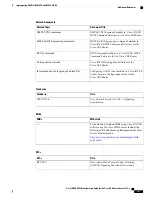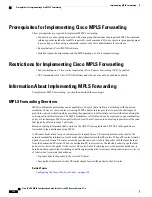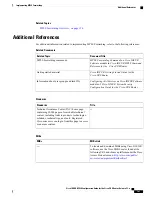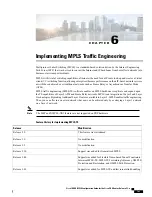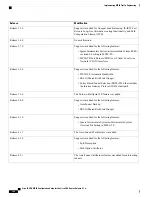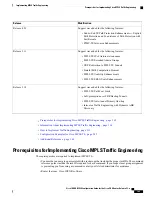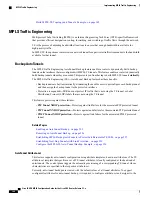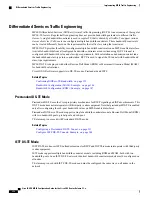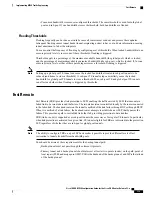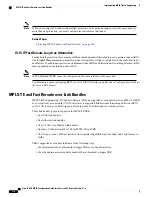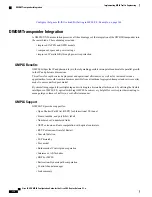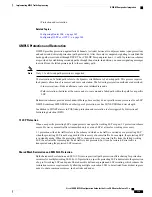
•
Installed composite mini-image and the MPLS package, or a full composite image.
•
IGP activated.
•
To configure Point-to-Multipoint (P2MP)-TE, a base set of RSVP and TE configuration parameters on
ingress, midpoint, and egress nodes in the MPLS network is required. In addition, Point-to-Point (P2P)
parameters are required.
•
Enable LDP globally by using the mpls ldp command to allocate local labels even in RSVP (MPLS TE)
only core. You do not have to specify any interface if the core is LDP free.
Information About Implementing MPLS Traffic Engineering
To implement MPLS-TE, you should understand these concepts:
Overview of MPLS Traffic Engineering
MPLS-TE software enables an MPLS backbone to replicate and expand upon the traffic engineering capabilities
of Layer 2 ATM and Frame Relay networks. MPLS is an integration of Layer 2 and Layer 3 technologies.
By making traditional Layer 2 features available to Layer 3, MPLS enables traffic engineering. Thus, you can
offer in a one-tier network what now can be achieved only by overlaying a Layer 3 network on a Layer 2
network.
MPLS-TE is essential for service provider and Internet service provider (ISP) backbones. Such backbones
must support a high use of transmission capacity, and the networks must be very resilient so that they can
withstand link or node failures. MPLS-TE provides an integrated approach to traffic engineering. With MPLS,
traffic engineering capabilities are integrated into Layer 3, which optimizes the routing of IP traffic, given
the constraints imposed by backbone capacity and topology.
Related Topics
Configuring Forwarding over the MPLS-TE Tunnel, on page 218
Benefits of MPLS Traffic Engineering
MPLS-TE enables ISPs to route network traffic to offer the best service to their users in terms of throughput
and delay. By making the service provider more efficient, traffic engineering reduces the cost of the network.
Currently, some ISPs base their services on an overlay model. In the overlay model, transmission facilities
are managed by Layer 2 switching. The routers see only a fully meshed virtual topology, making most
destinations appear one hop away. If you use the explicit Layer 2 transit layer, you can precisely control how
traffic uses available bandwidth. However, the overlay model has numerous disadvantages. MPLS-TE achieves
the TE benefits of the overlay model without running a separate network and without a non-scalable, full
mesh of router interconnects.
How MPLS-TE Works
MPLS-TE automatically establishes and maintains label switched paths (LSPs) across the backbone by using
RSVP. The path that an LSP uses is determined by the LSP resource requirements and network resources,
such as bandwidth. Available resources are flooded by means of extensions to a link-state-based Interior
Gateway Protocol (IGP).
Cisco IOS XR MPLS Configuration Guide for the Cisco CRS Router, Release 5.1.x
166
Implementing MPLS Traffic Engineering
Information About Implementing MPLS Traffic Engineering


